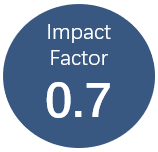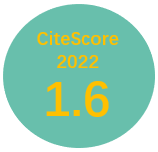Infrastructure investment and employment: Evidence for Portugal
Vol 5, Issue 2, 2021
VIEWS - 1391 (Abstract) 471 (PDF)
Abstract
Keywords
Full Text:
PDFReferences
Aschauer A (1989a). “Is public expenditure productive?” Journal of Monetary Economics, 23(2): 177–200. https://doi.org/10.1016/0304-3932(89)90047-0
_____ (1989b). “Does public capital crowd out private capital?” Journal of Monetary Economics, 24(2): 171–188. https://doi.org/10.1016/0304-3932(89)90002-0
Auerbach A and Gale W (2009). Activist Fiscal Policy to Stabilize Economic Activity (NBER Working Paper 15407). National Bureau of Economic Research. https://doi.org/10.3386/w15407
Barro RJ (1990). “Government spending in a simple model of endogenous growth”. Journal of Political Economy, 98(5, Part 2): S103–125. https://doi.org/10.1086/261726
Basdevant O, Chaponda T, Gonguet F, Honda J and Thomas S (2020). “Designing fiscal rules to protect investment”. In: Schwartz G, Fouad M, Hansen T and Verdier G (Eds.), Well Spent: How Strong Infrastructure Governance Can End Waste in Public Investment, pp. 106–124. International Monetary Fund.
Bivens J (2014). The Short- and Long-Term Impact of Infrastructure Investments on Employment and Economic Activity in the U.S. Economy (Economic Policy Institute Briefing Paper No. 374). Economic Policy Institute.
Blanchard O and Perotti R (2002). “An empirical characterization of the dynamic effects of changes in government spending and taxes on output”. The Quarterly Journal of Economics, 117(4): 1329–68. https://doi.org/10.1162/003355302320935043
Bom PRD and Ligthart JE (2014). “What have we learned from three decades of research on the productivity of public capital?” Journal of Economic Surveys, 28(5): 889–916. https://doi.org/10.1111/joes.12037
Brown-Collier EK and Collier BE (1995). “What Keynes really said about deficit spending”. Journal of Post Keynesian Economics, 17(3): 341–355. https://doi.org/10.1080/01603477.1995.11490034
Christiano LJ, Eichenbaum M and Evans CL (1996). “The effects of monetary policy shocks: Evidence from the flow of funds”. The Review of Economics and Statistics, 78(1): 16–34. https://doi.org/10.2307/2109845
_____ (1999). “Monetary policy shocks: What have we learned and to what end?” In: Taylor JB and Woodford M (Eds.), Handbook of Macroeconomics, Vol. 1A, pp. 65–148. North-Holland. https://doi.org/10.1016/S1574-0048(99)01005-8
Eisner R (1986). How Real is the Federal Deficit? The Free Press.
European Central Bank (2016). “Public investment in Europe”. ECB Economic Bulletin, 2016(2).
European Commission (1990). Community Support Framework 1989–93 For the Development and Structural Adjustment of the Regions whose Development is Lagging (Objective 1): Greece. European Commission.
_____ (2014a). Infrastructures in the EU: Developments and Impact on Growth (European Economy Occasional Papers 203). Directorate-General for Economic and Fiscal Affairs, European Commission.
_____ (2014b). An Investment Plan for Europe (Communication from the Commission to the European Parliament, the Council, the European Central Bank, the European Economic and Social Committee, the Committee of the Regions and the European Investment Bank). European Commission.
Futagami K, Morita Y and Shibata A (1993). “Dynamic analysis of an endogenous growth model with public capital”. The Scandinavian Journal of Economics, 95(4): 607–625. https://doi.org/10.2307/3440914
Glomm G and Ravikumar B (1997). “Productive government expenditures and long-run growth”. Journal of Economic Dynamics and Control, 21(1): 183–204. https://doi.org/10.1016/0165-1889(95)00929-9
Greiner A and Hanusch H (1998). “Growth and welfare effects of fiscal policy in an endogenous growth model with public investment”. International Tax and Public Finance, 5(3): 249–261. https://doi.org/10.1023/A:1008673925024
Gramlich E (1994). “Infrastructure investment: A review essay”. Journal of Economic Literature, 32: 1176–1196.
Gurría A (2014). Portugal: Deepening Structural Reform to Support Growth and Competitiveness [Remarks transcript]. Organisation for Economic Co-operation and Development.
Haughwout A (2019). “Infrastructure investment as an automatic stabilizer”. In: Boushey H, Nunn R and Shambaugh J (Eds.), Recession Ready: Fiscal Policies to Stabilize the American Economy, pp. 129–152. Brookings Institution.
International Monetary Fund (2015). Making Public Investment More Efficient. IMF.
_____ (2020). Fiscal Monitor, October 2020: Policies for the Recovery. IMF.
Kamps C (2005). “The dynamic effects of public capital: VAR evidence for 22 OECD countries”. International Tax and Public Finance, 12: 533–558. https://doi.org/10.1007/s10797-005-1780-1
Leduc S and Wilson D (2012). “Roads to prosperity or bridges to nowhere? Theory and evidence on the impact of public infrastructure investment”. NBER Macroeconomics Annual, 27(1): 89–142. https://doi.org/10.1086/669173
Mineshima A, Poplawski-Ribeiro M and Weber A (2014). “Fiscal multipliers”. In: Cottarelli C, Gerson P and Senhadji A (Eds.), Post-Crisis Fiscal Policy, pp. 315–372. MIT Press. https://doi.org/10.7551/mitpress/9780262027182.003.0013
Munnell AH (1992). “Policy watch, infrastructure investment and economic growth”. Journal of Economic Perspectives, 6(4): 189–198. https://doi.org/10.1257/jep.6.4.189
Pereira AM (2000). “Is all public capital created equal?” The Review of Economics and Statistics, 82(3): 513–518. https://doi.org/10.1162/rest.2000.82.3.513
_____ (2001). “On the effects of public capital formation on private investment: What crowds in what?” Public Finance Review, 29(1): 3–25. https://doi.org/10.1177/109114210102900101
Pereira AM and Andraz JM (2003). “On the impact of public investment on the performance of US industries”. Public Finance Review, 31(1): 66–90. https://doi.org/10.1177/1091142102239135
_____ (2004). “Public highway spending and state spillovers in the USA”. Applied Economics Letters, 11(12): 785–788. https://doi.org/10.1080/1350485042000254593
_____ (2005). “Public investment in transportation infrastructures and economic performance in Portugal”. Review of Development Economics, 9(2): 177–196. https://doi.org/10.1111/j.1467-9361.2005.00271.x
_____ (2007). “Public investment in transportation infrastructures and industry performance in Portugal”. Journal of Economic Development, 32(1): 1–20. https://doi.org/10.35866/caujed.2007.32.1.001
_____ (2011). “On the economic and fiscal effects of investment in road infrastructure in Portugal”. International Economics Journal, 25(3): 465–492. https://doi.org/10.1080/10168737.2011.607256
_____ (2013). “On the economic effects of public infrastructure investment: A survey of the in-ternational evidence”. Journal of Economic Development, 38(4): 1–37. https://doi.org/10.35866/caujed.2013.38.4.001
Pereira AM and Flores de Frutos R (1999). “Public capital accumulation and private sector per-formance”. Journal of Urban Economics, 46(2): 300–322. https://doi.org/10.1006/juec.1998.2124
Pereira AM and Pereira RM (2016). Investimentos em Infraestruturas em Portugal [Infrastructure Investments in Portugal]. Fundação Francisco Manuel dos Santos.
_____ (2018). “Are all infrastructure investments created equal? The case of Portugal”. Journal of Infrastructure Policy and Development, 2(1): 67–86. https://doi.org/10.24294/jipd.v2i1.145
_____ (2019). “How does infrastructure investment affect macroeconomic performance? Evidence from Portugal”. Journal of Infrastructure Development, 11(1–2): 14–40. https://doi.org/10.1177/0974930619872083
_____ (2020). “Infrastructure investments in Portugal and the traded/non-traded industry mix”. Journal of Infrastructure Policy and Development, 4(1): 1–26. https://doi.org/10.24294/jipd.v4i1.1124
Ramey V (2011). “Can government purchases stimulate the economy?” Journal of Economic Lit-erature, 49(3): 673–685. https://doi.org/10.1257/jel.49.3.673
_____ (2020). The Macroeconomic Consequences of Infrastructure Investment (National Bureau of Economic Research Working Paper No. 27625). NBER. https://doi.org/10.3386/w27625
Romp W and de Haan J (2007). “Public capital and economic growth: A critical survey”. Perspektiven der Wirtschaftspolitik, 8(S1): 6–52. https://doi.org/10.1111/j.1468-2516.2007.00242.x
Rudebusch GD (1998). “Do measures of monetary policy in a VAR make sense?” International Economic Review, 39(4): 907–931. https://doi.org/10.2307/2527344
Sims CA and Zha T (1999). “Error bands for impulse responses”. Econometrica, 67(5): 1113–1155. https://doi.org/10.1111/1468-0262.00071
Tressel T, Wang S, Kang JS and Shambaugh J (2014). Adjustment in Euro Area Deficit Countries: Progress, Challenges and Policies. International Monetary Fund. https://doi.org/10.5089/9781498373814.006
Wu Y (2021, July 14). “State infrastructure as a countercyclical tool”. PA Times Online. https://patimes.org/state-infrastructure-programs-as-a-countercyclical-tool/
DOI: https://doi.org/10.24294/jipd.v5i2.1377
Refbacks
- There are currently no refbacks.
Copyright (c) 2021 Alfredo M. Pereira, Rui M. Pereira, Pedro G. Rodrigues

This work is licensed under a Creative Commons Attribution-NonCommercial 4.0 International License.

This site is licensed under a Creative Commons Attribution 4.0 International License.










